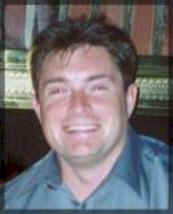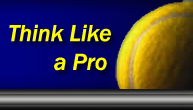|
Focus on Core Training for Maximum Results
Every time you play tennis, your body is placed under extreme situations: impact upon your joints, ballistic movements, rotation of both the upper and lower body.
For this reason, tennis players should train to be multi-functional. As a tennis player, you should be able to perform tasks using upper and lower extremities at the same time. So, your focus shouldn’t be on just training the fundamentals of tennis strokes any longer. For maximum results on the tennis court, learn to focus on training your "core."
Having a strong structural core enables players to perform better. Core training involves working the "core" of the tennis player, otherwise referred to as an athlete’s "base."
The tennis player’s core includes:
-
Abdominal muscles and Lower back
-
Overall flexibility
-
Balance & Stability
Abdominal muscles & Lower back
Important for posture, strengthens ties between your upper and lower body. Focus on crunches and sit-ups (all types) for abdominal strength, and hyperextensions and "good mornings" for the lower back.
Flexibility
The key to being limber and loose. Increases blood flow, circulation, and enables muscles to speed up and react quicker.
Balance & Stability
By putting the body in awkward positions, balance teaches the neuro-muscular system to compensate and re-act during competition. Various drills can be constructed, such as balance beams, movement on one foot, and many others. Be creative, the possibilities are endless.
Training Your Core - Phase 1
Abdominal muscles and lower back are important for posture. They strengthen the ties between your upper and lower body. They are the source for rotational movements, agility, and are the center for virtually all of your bodies’ movements.
Focus on crunches and sit-ups (all types) for abdominal strength, hyperextensions and "good mornings" for the lower back. Here is a sample routine:
5-10 minutes of stretching, after a short warm-up, should be done before this training. Do 2 sets of each exercise twice a week, and work your way up to 3 sets three times a week. |
Roman chair sit ups |
15 - 20 reps |
Hyperextensions |
15 - 20 reps |
Crunches |
25 reps |
Leg raises |
20 reps |
Regular sit ups |
25 reps |
Training Your Core - Phase 2
Overall Flexibility is the key to being limber and loose. Flexibility increases blood flow, circulation, and enables muscles to speed-up and re-act quicker.
The best time to stretch is after 5-10 minutes of light warm-up. Your body is now at a point when it responds best to flexibility training. Stretch for 10-15 minutes or until you feel loose, relaxed, and ready for training.
You must have a flexible and strong body, especially if you intend to increase your speed, balance, and agility. Your joints will be more functional when flexible. If you have strong muscles and flexibility you are less susceptible to injury.
Flexibility is defined as your ability to flex, extend, or circumduct your body’s joints. They must be able to go through their intended full-range of motion without substantial decrement in muscle strength at any point through the range. Flexibility refers to joints, and never to muscles or other soft tissues.
Most athletes and fitness enthusiasts overemphasize flexibility training, while neglecting the development of functional strength. It is important for a joint to have a full range of motion, as well as having an adequate functional strength. Improving a joints range of motion without increasing muscle strength is an invitation to injury. Especially at it’s new range of motion.
When training, RealAthlete.com suggests that an athlete undergoes flexibility sessions two times per day. Everyday.
Flexibility is extremely important. It’s what will help your body to "bounce back" from falls, ballistic movements, and intense playing. Flexibility will also enable you to develop better agility, balance, and much more. The benefits of good flexibility are endless.
Training Your Core - Phase 3
The Key to:
EXPLOSIVE SPEED
Balance & Stability: By putting the body in awkward positions, balance teaches the neuro-muscular system to compensate and re-act during competition. Various drills can be constructed, such as balance beams, movement on one foot, and many others. The possibilities are limitless.
Balance is 'your ability to control equilibrium’ - to control linear and non-linear accelerations. A person with "good balance" effectively manipulates body accelerations in order to remain stable.
Stability is ‘the resistance to disruptions of equilibrium.’ This means resistance to both linear and non-linear (angular) acceleration (when your body accelerates, it’s not in equilibrium)
You might manipulate your stability to achieve different movement objectives. In some instances, your goal is to maximize stability so that you don't lose equilibrium and fall over. At other times, you’ll minimize your stability so that you are poised and ready for movement (e.g. a ready stance).
Five ways to increase stability:
-
Increase body weight
Increase friction between foot and surface (clay vs. hardcourt) -
Increase the size of the base of support (balance beam vs. tennis court)
-
Position the center-of-gravity as low (vertically) as possible (crouch, bend knees, etc.)
-
Shift center-of-gravity to resist an oncoming force (i.e. lean into it)
Two simple exercises to increase balance:
-
Here's an easy exercise you can try right now. Stand on one foot. Not too tough, huh? Well, now reach forward and touch the ground in front of you, and stand up straight again. A bit harder, huh?
-
Here’s number two. For this drill, you need to find a partner and a medicine ball. It’s time to play a game of catch.
On one foot. You’ll probably find yourself staggering and swaying and hopping around to avoid falling. If you never practice balance exercises, chances are your balance is not as good as it could be; maybe not even as good as you think.
Core training should be a tennis athletes’ focus, as it ties speed, quickness and power/strength training together. Emphasize your core. And train your core at least twice a week.
This is from the www.RealAthlete.com FREE monthly newsletter.
 |
|
Bio: Samuel F. Hirschberg is the Head Tennis Professional at the Ojai Valley Inn & Spa Tennis Center in Ojai, Ca. He is the author of ‘1 Athlete – 5 Strengths: Building the Ultimate Athlete’ training manual, and chief editor of the RealAthlete.com monthly newsletter that services athletes and coaches from over 35 countries. |
|





